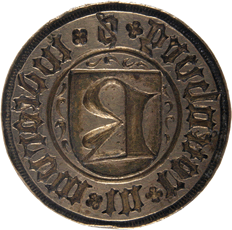
Following Jewish footsteps
through medieval Rothenburg












Größere Karte anzeigen
Jakobskirche

The circumsision of baby Jesus (around 1460) on the Herlin Altar, St Jacob's Church.
Source: Rothenburg ob der Tauber town archives
The biggest part of the town's parish church of Saint Jacob was built when Heinrich Toppler, a mayor extremely
important to Rothenburg, was in power. Toppler, who was killed in 1408, was very eager for Jewish people to make
the town their home. It was also under Toppler that the Jewish community re-settled on the Judengasse (Jew's Lane),
located in the northern part of the town on the raised moat outside the first wall. The picture panels of the high
altar, also called "Zwölfboten Altar" (1466), show scenes from the life of Christ and his worldly parents Mary
and Joseph, one of them being the ritual circumcision of baby Jesus by a priest. Therefore Jesus is definitely
portrayed as Jewish and the cordial relation between Christians and Jews was shown publicly in a way that could
also be understood by illiterate people. The peaceful co-existence of Jews and Christians is also depicted in the
elaborate stained glass windows of the eastern choir (from around 1400), e. g. in the scene showing the "Mannalese"
(gathering the manna) with the Jews wearing their distinctive headgear. As part of the world famous altar situated
on the gallery of the eastern choir and carved by the artist Tilman Riemenschneider, Judas, the alleged traitor,
is given an appreciation truly unheard of up to that day. He's depicted in the centre of the scene of the Last
Supper as the only one of the disciples standing upright, with Jesus being the only one taller than him.